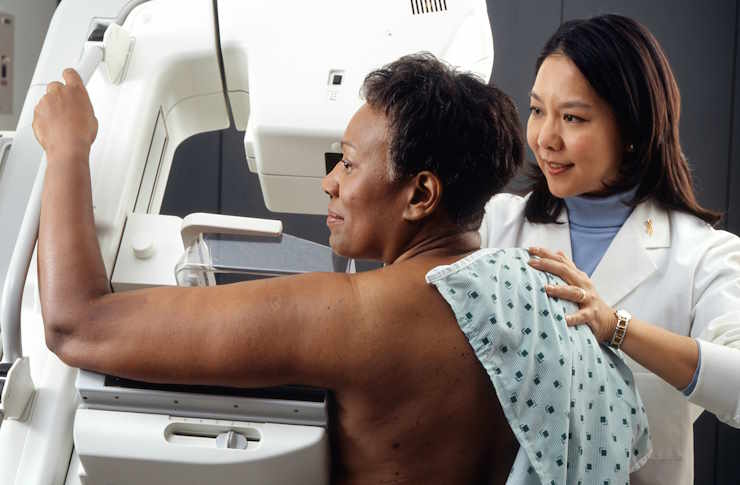Triple Negative Breast Cancer: Symptoms, Detection and Treatment
Triple negative breast cancer represents one of the most aggressive forms of breast cancer, accounting for approximately 15-20% of all breast cancer diagnoses. Unlike other breast cancer types, this variant lacks estrogen receptors, progesterone receptors, and HER2 protein, making it particularly challenging to treat with standard hormone therapies. Understanding the early warning signs and risk factors is crucial for timely intervention and improved outcomes. While this cancer type tends to grow and spread more quickly than other forms, advances in treatment approaches continue to offer hope for patients facing this diagnosis.

Key Symptoms and Early Signs of Triple Negative Breast Cancer
Triple negative breast cancer often presents with similar symptoms to other breast cancer types, but may progress more rapidly. The most common early indicators include a new lump or mass in the breast tissue, which may feel hard and irregular in shape. Changes in breast size or shape, skin dimpling or puckering, and nipple discharge or inversion are also significant warning signs.
Patients may notice breast pain or tenderness, though this is less common in early stages. Swelling in the breast, collarbone area, or underarm region can indicate lymph node involvement. Skin changes such as redness, scaling, or thickening of the breast skin or nipple area should prompt immediate medical attention.
Early Detection and Main Warning Signs
Early detection of triple negative breast cancer significantly improves treatment outcomes, despite its aggressive nature. Regular breast self-examinations remain important, particularly for women with family history or genetic predisposition. Any persistent changes in breast tissue texture, appearance, or sensation warrant professional evaluation.
Mammography screening continues to be the gold standard for early detection, though triple negative breast cancer may sometimes appear differently on imaging compared to other types. Dense breast tissue can make detection more challenging, potentially requiring additional imaging methods such as ultrasound or MRI for comprehensive evaluation.
Healthcare providers may recommend more frequent screening for high-risk individuals, including those with BRCA1 or BRCA2 genetic mutations. Clinical breast examinations performed by healthcare professionals can detect changes that may not be apparent during self-examination.
First Indicators and Risk Factors
Several risk factors increase the likelihood of developing triple negative breast cancer. Age plays a significant role, with this cancer type more commonly affecting younger women, particularly those under 40 years old. African American and Hispanic women face higher rates of triple negative breast cancer compared to other ethnic groups.
Genetic factors contribute substantially to risk, with BRCA1 mutations strongly associated with triple negative breast cancer development. Family history of breast or ovarian cancer, particularly at young ages, indicates elevated risk. Personal history of previous breast cancer or certain benign breast conditions also increases susceptibility.
Lifestyle factors such as obesity, lack of physical activity, and alcohol consumption may influence risk levels. Reproductive factors including early menstruation, late menopause, and never having children or having first child after age 30 can also contribute to overall breast cancer risk.
Treatment Approaches and Options
Triple negative breast cancer treatment typically involves a multi-modal approach combining surgery, chemotherapy, and sometimes radiation therapy. Since this cancer type lacks hormone receptors and HER2 protein, traditional hormone therapies and HER2-targeted treatments are ineffective, making chemotherapy the primary systemic treatment option.
Neoadjuvant chemotherapy, administered before surgery, often helps shrink tumors and may improve surgical outcomes. Common chemotherapy regimens include combinations of anthracyclines, taxanes, and platinum-based drugs. Immunotherapy has emerged as a promising treatment option, particularly for patients with advanced or metastatic disease.
Surgical options range from breast-conserving surgery (lumpectomy) to mastectomy, depending on tumor size, location, and patient preferences. Lymph node evaluation helps determine cancer spread and guides additional treatment decisions. Radiation therapy typically follows breast-conserving surgery and may be recommended after mastectomy in certain cases.
Prognosis and Long-term Outcomes
While triple negative breast cancer is generally more aggressive than other breast cancer types, prognosis varies significantly based on stage at diagnosis and individual patient factors. Early-stage triple negative breast cancer often responds well to treatment, with many patients achieving long-term remission.
The absence of targeted therapy options historically made treatment more challenging, but recent advances in immunotherapy and novel chemotherapy combinations have improved outcomes. Patients who achieve complete pathological response to neoadjuvant chemotherapy typically have excellent long-term prognosis.
Regular follow-up care remains essential for monitoring potential recurrence, as triple negative breast cancer has a higher risk of early recurrence compared to hormone receptor-positive cancers. However, if recurrence doesn’t occur within the first few years, long-term survival rates improve significantly.
Support and Resources
Facing a triple negative breast cancer diagnosis requires comprehensive support beyond medical treatment. Many patients benefit from connecting with support groups specifically for triple negative breast cancer, where they can share experiences with others facing similar challenges.
Genetic counseling may be recommended for patients and their families, particularly given the strong association with BRCA mutations. Understanding genetic risk can inform screening recommendations for family members and reproductive planning decisions.
Psychological support through counseling or therapy helps many patients cope with the emotional impact of diagnosis and treatment. Nutritional counseling and physical therapy may also play important roles in recovery and maintaining quality of life throughout treatment.
Triple negative breast cancer presents unique challenges, but continued research and treatment advances offer increasing hope for improved outcomes. Early detection through regular screening and prompt attention to warning signs remain the most effective strategies for optimal treatment results.



